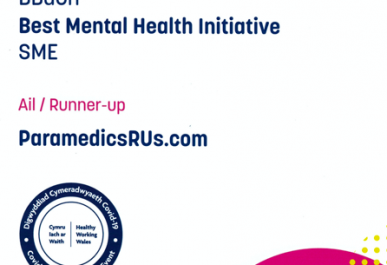A short analysis of reasons why some do suicide behaviour
The continuum of suicide taught on our suicide first aid courses identifies the following factors which can contribute to suicide behaviour.
Identifying factors.
This can be related to gender identity or sexual orientation. People who identify themselves differently to their biological gender, or those who are within the LGTB+ may be subject to negative reactions from significant people in their lives, they may be subjected to discrimination and abuse. These can have serious detrimental implications to their mental health and cause them to start to have thoughts of suicide. Identity can also be considered in other ways. For example, someone may identify themselves to be a father. If their children are taken away from them, or if they were to die, the feeling of identifying as being a father may stop. Causing a feeling of decreased self-worth. Other examples of identity factors are if someone identified themselves as a fit and healthy soldier, but if horribly wounded, they may feel that they can no longer identify themselves as fit and healthy. They may start to consider themselves worthless and start to have thoughts of suicide.
Biological factors.
These include genetic influences, brain chemistry, hormone levels, nutrition, and gender. More than twice as many males die due to suicide as females (12.6 per 100 000 males compared with 5.4 per 100 000 females) (WHO, 2021). Therefore, simply being a male can make one more likely to die from suicide. The reasons for this can be complex, but it is believed that females are less likely to use lethal means when suiciding and are more able to speak openly to others to gain support when approaching a crisis. These details are difficult to quantify, but there is an evolution theory which suggests that males typically were the hunter gatherers, who would go off alone or in small hunting groups, whilst the females were more entwined in their community, and able to talk more openly.
Psychological factors.
If someone has a mental health condition, they can vary in mood and their actions can vary considerably based upon which condition they have. Certain conditions such as manic depression and schizophrenia have greater rates of suicide than those without the diagnosis of mental health conditions. Suicide and self-harm are not mental health problems themselves, but they are linked with mental distress.
Past History.
If, in the past, a person were to have experienced a traumatic episode, such as an adverse childhood experience, they may become more susceptible to thoughts of suicide. Traumatic events can seriously affect a person’s mental health and cause them to feel a wide range of challenging emotions. With the right support and care these people can go on to lead a fulfilling and enjoyable life. However, many who have traumatic past events may not cope with daily stressors as well as others. This can contribute to stress anxiety and depression and lead them to have thoughts of suicide.
Current life events.
Occasionally things can happen in a persons life which may immediately make them have thoughts of suicide. Family bereavements for example, or incarceration. When challenging events occur, it is possible that the person lacks the emotional resilience or mental capacity to see positive ways forward. Normally in our day to day lives we all have stressors, many of which can be brought about by a current life event (moving house for example). However, when the event is so dramatic, or the person simply cannot cope, it can lead to thoughts of suicide.
Protective Factors
It’s important to note that when people think about suicide it is likely there are multiple factors that have led to this point, so they do not always work in isolation. However, some factors may be more influential than others. Conversely, there are things that can be protective factors. For example, having a strong support mechanism and being well integrated into a loving society can be a protective factor. Keeping healthy and fit with regular exercise can also. There are 5 steps to wellbeing which is recommended by the NHS. Having good wellbeing can be a protective factor.
- Connect to other people
- Be physically active
- Learn new skills
- Give to others
- Pay attention to the present moment (mindfulness)
For more on this please look at our Suicide First Aid courses or contact us










